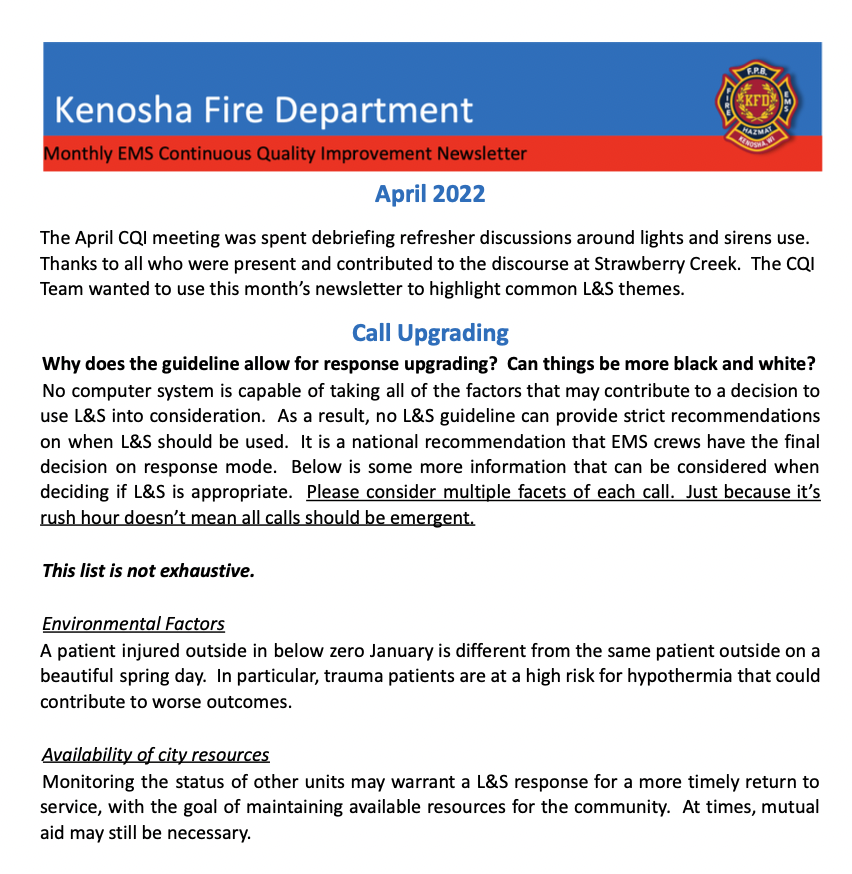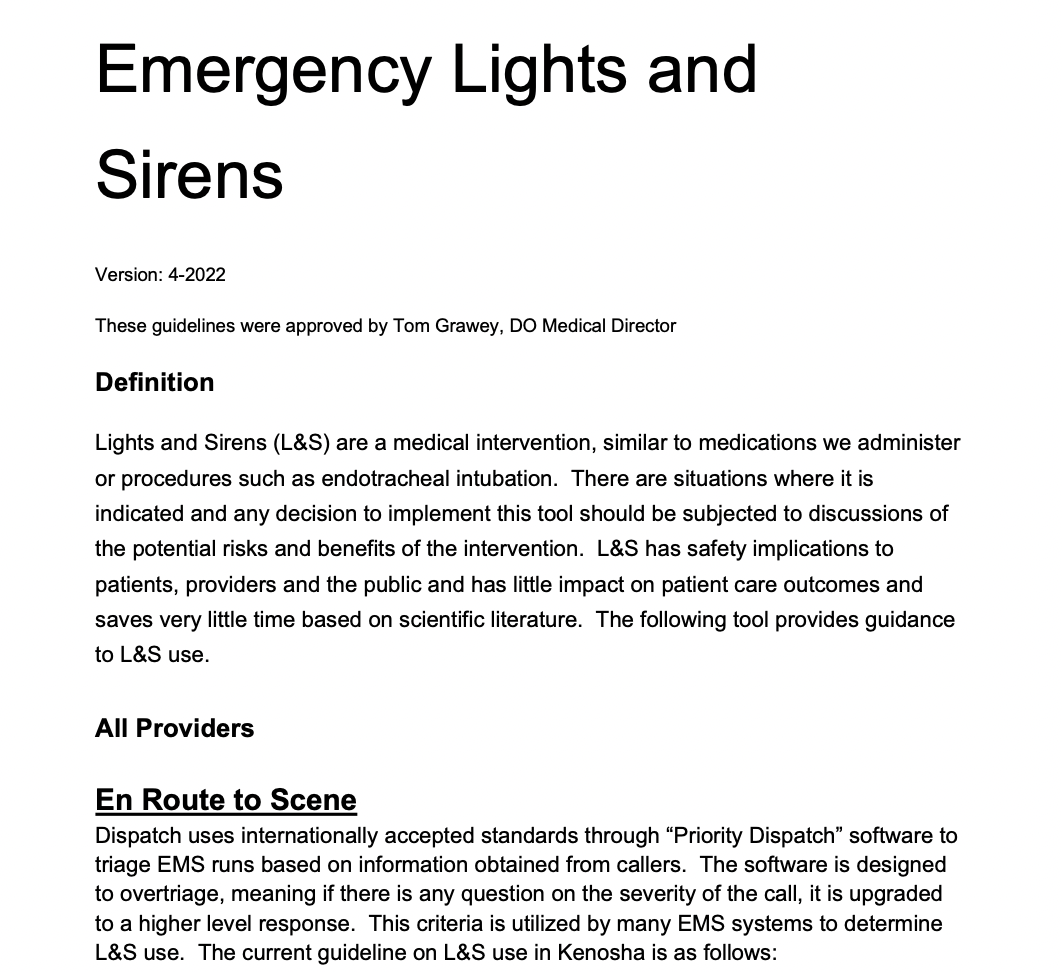|
Preliminary Case Study: Kenosha Fire Department
In December, 2021, when Kenosha Fire Department (KFD), in Kenosha, Wisconsin, rolled out a new policy to decrease their L&S responses, it was a huge culture shock for their providers. Since then, progress has been slow, but the lessons they've learned have been invaluable. KFD's new policy established 6 dispatch codes, with the 2 lowest-acuity codes (about 20% of calls) designated as non-L&S responses. The policy also stated that providers could upgrade to a L&S response if they felt it was appropriate. During the spring and summer of 2021, Kenosha's leaders discussed the policy with their stakeholders in preparation for the December rollout. Then, on December 1st, they turned the policy on. Immediately, providers began to report issues. They stated they felt "like we're not doing as good of a job because we're going non-emergent." They just "didn't feel right" getting to their patients slower. There were also a few instances of higher-acuity calls being dispatched non-emergent, and a resulting distrust of the new code system.
In response, KFD's leadership held more open discussions and listening sessions, giving providers a chance to unload their reactions to the policy. These meetings identified that many people did not know they could upgrade their response to L&S, as long as they could justify why. Leadership quickly changed the policy's wording to better convey allowance for provider discretion. In May, 2022, they sent out a newsletter highlighting when and why providers could upgrade. Since then, progress has slowly begun as people get used to the policy. But Kenosha is still picking up the pieces after their shaky rollout, and leadership has several tips for other systems to avoid these hurdles. Tips from Kenosha Fire Department
Lights and siren use is a huge part of EMS culture, and changing it is difficult. But with continuous, open communication with providers and a gradual rollout, your system has a better shot at meaningful quality improvement. Additional Resources:
|




